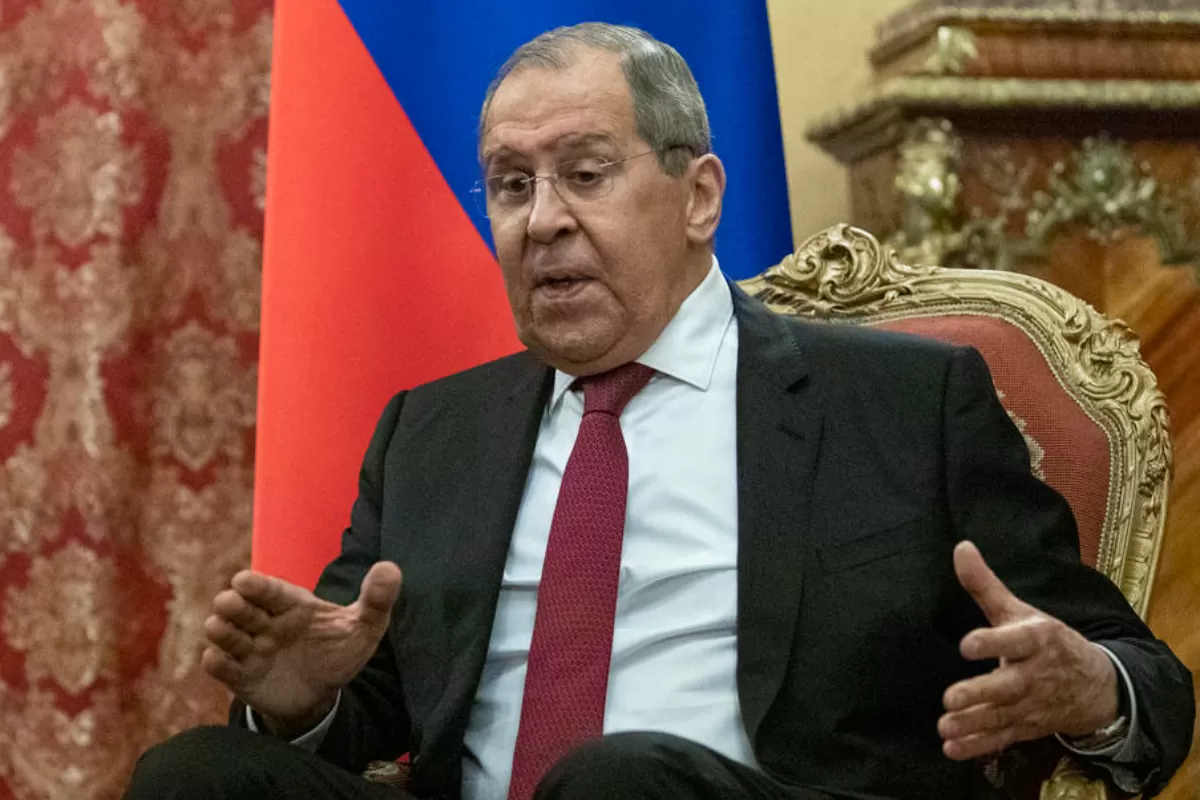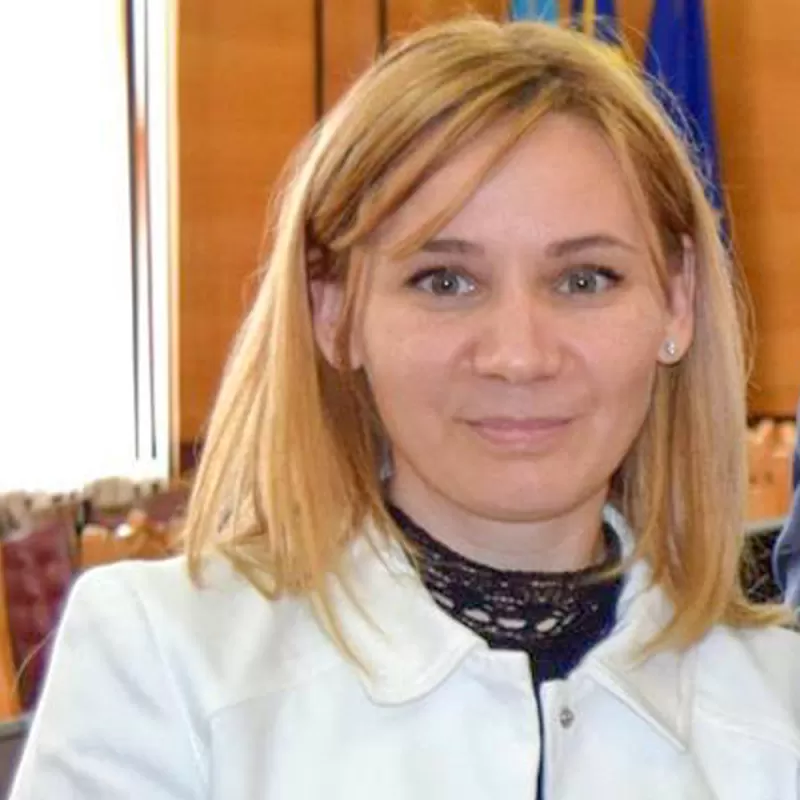
The West wants to destabilize the vicinity of Russia and has orchestrated color revolutions in Belarus and Ukraine and staged a geopolitical conflict in Moldova, says Russia’s Foreign Minister, Sergey Lavrov. The narrative about the “foreign enemy” is being rehashed as Putin’s regime is preparing for this autumn’s election.
NEWS: “Western countries are trying to create a belt of instability around Russia, in neighboring states, including in Belarus, Ukraine and Moldova, Russia’s Foreign Minister, Sergey Lavrov, has said. “They are trying to build a ring of instability all around us, by presenting our closest neighbors, people who are our brethren, with a choice: you’re either with the West, or with the Russian Federation. They want to seize territories in our vicinity using various military or economic methods, and to impose a cordon sanitaire all around us, and on top of that to get certain benefits by influencing the development of neighboring states in a decisive manner”, the Russian top diplomat told United Russia deputies. The Russian official went on to say that such a line of conduct was “expressed in plenary sittings in Ukraine”. Similarly, in recent months “color revolutions” were “field-tested” in Belarus. What is more, the Americans and Europeans have engendered a geopolitical conflict in Moldova, “without being bothered by the fact that they openly spread propaganda in the last election campaign”, Lavrov also pointed out. “Right now, our Western peers are trying to boost their presence, including at military level, all around our borders, but also in Central Asia and the Caucasus”, the Russian official concluded. Minister Lavrov also underlined that Western political ideologists don’t hide their intention of destabilizing the internal affairs in Russia, ahead of the election for the State Duma”.
NARRATIVES: 1. The West wants to create instability around Russia. 2. The West has organized color revolutions in Belarus and Ukraine. 3. The West wants to take over territories around Russia by means of various methods, including armed force, and assume political control of Ukraine, Belarus and Ukraine. 4. The West caused a geopolitical conflict in the election campaign in Moldova. 5. The West wants to destabilize internal affairs in Russia ahead of the upcoming election for the State Duma.
BACKGROUND: 30 years since the collapse of the USSR and the proclamation of the sovereignty and independence of the former Soviet republics, the Kremlin is trying to maintain its grip on ex-Soviet space. Any effort from these countries to get closer to the European Union or NATO has been reprimanded by the Russian Federation through various actions, from blackmail regarding the delivery and prices of natural gas or economic embargos and supporting breakaway regions, to as far as launching and fueling armed conflicts. The most recent such example is the conflict in Eastern Ukraine, in Donbass, where for the last seven years Russian-backed separatist forces have been fighting against Ukrainian security troops. The conflict broke out in 2014, amidst a large-scale people’s uprising, which prompted the then president Viktor Yanukovych to flee the country, after refusing to sign the Association Agreement between the Ukraine and the European Union, caving in to Russia’s pressure. Shortly before the conflict in Donbass, the Russian Federation invaded and annexed the Crimean Peninsula. All these acts of aggression against Ukraine have determined Kiev to step up its efforts to join NATO.
A similar conflict, which is currently frozen, can be found in Transnistria, in Moldova. The conflict started in 1992 and is still far from a resolution, 30 years on. Russia’s 14th Army was deployed at the time to Eastern Moldova. After the ceasefire agreement was signed by the presidents of the Russian Federation, Boris Yeltsin and the Republic of Moldova, Mircea Snegur, the Kremlin managed to switch from aggressor to peacekeeper, warrantor state and negotiator. Russia continues to support the separatist political regime in Tiraspol and refuses to withdraw its troops and munition from this territory. Apart from this point of pressure, the Kremlin also punished the Republic of Moldova in 2013, when the country signed its own Association Agreement with the European Union, by introducing an embargo on Moldovan exports. Additionally, the Russian Federation bankrolls certain political parties in the Republic of Moldova, first and foremost PSRM, which during its term in office advocated pro-Russian policies. Its Socialist leader, former president Igor Dodon, was exposed by the media as secretly working with Russian foreign intelligence. Moscow has been trying to force Chişinău to adopt a permanent neutral status by means of an international agreement, although Russian troops are illegally stationed on its territory. The neutrality serves primarily as a guarantee against Moldova’s bid to join NATO.
Also worth noting is that Russia has been using separatist regions in Georgia as well in the wake of the 2008 armed conflict, and recognized the independence of Abkhazia and South Ossetia, which it had supported until then and continues to do so to this day.
Amidst social unrest in Belarus, triggered by the rigged presidential election of 2020, dictator Alexander Lukashenko found renewed support in Russia (much like Yanukovych). The support encouraged Lukashenko to forcefully suppress the peaceful protests across the country. Thousands of people were arrested, opposition leaders were driven away from the country, in addition to thousands of Belarusian citizens forced to flee their country.
PURPOSE: The narratives are designed to introduce the myth of “the foreign enemy” and mobilize both party and voters ahead of the September election due in Russia. Furthermore, these statements help Russia articulate its claim over territories from the former USSR, and helps it reinforce the idea that Russia will have to defend these lands. The narratives also try to shatter any attempt from the ex-Soviet republics at drawing closer to the EU and NATO.
WHY THE NARRATIVES ARE FALSE: Minister Lavrov’s remarks about the West allegedly destabilizing the situation around Russia are not supported by any evidence, so we are therefore talking about mere political speculation serving the interests of the Russian Federation.
The 2014 protests in Ukraine and the 2020 protests in Belarus were triggered by popular disgruntlement with the policies of Ukraine’s president at the time, Viktor Yanukovych, and with regard to Lukashenko’s defrauding of the presidential election, respectively. Conversely, the Kremlin backed both presidents in the middle of mass street protests. Yanukovych found shelter in the Russian Federation, while Lukashenko visited Putin, shortly after the international community did not recognize the election in Belarus and condemned the regime’s oppressive measures against the peaceful demonstrators.
No country in the West has ever staged a military campaign in countries from the former USSR around Russia. On the contrary, Russia provides military support to all breakaway regions and armed conflicts that have taken place in Ukraine, Georgia or Moldova. As regards the geopolitical conflict in the election campaign in the Republic of Moldova, the Electoral Bloc of Communists and Socialists, made up of PSRM and PCRM, an alliance that enjoys the Russian Federation’s support, is in fact the one that tried to drag its adversaries, PAS and president Maia Sandu, into a geopolitical clash. The Socialists launched numerous unfounded attacks and spread fake news regarding pro-European parties and Maia Sandu, NGOs and US and EU ambassadors to Chişinău.


